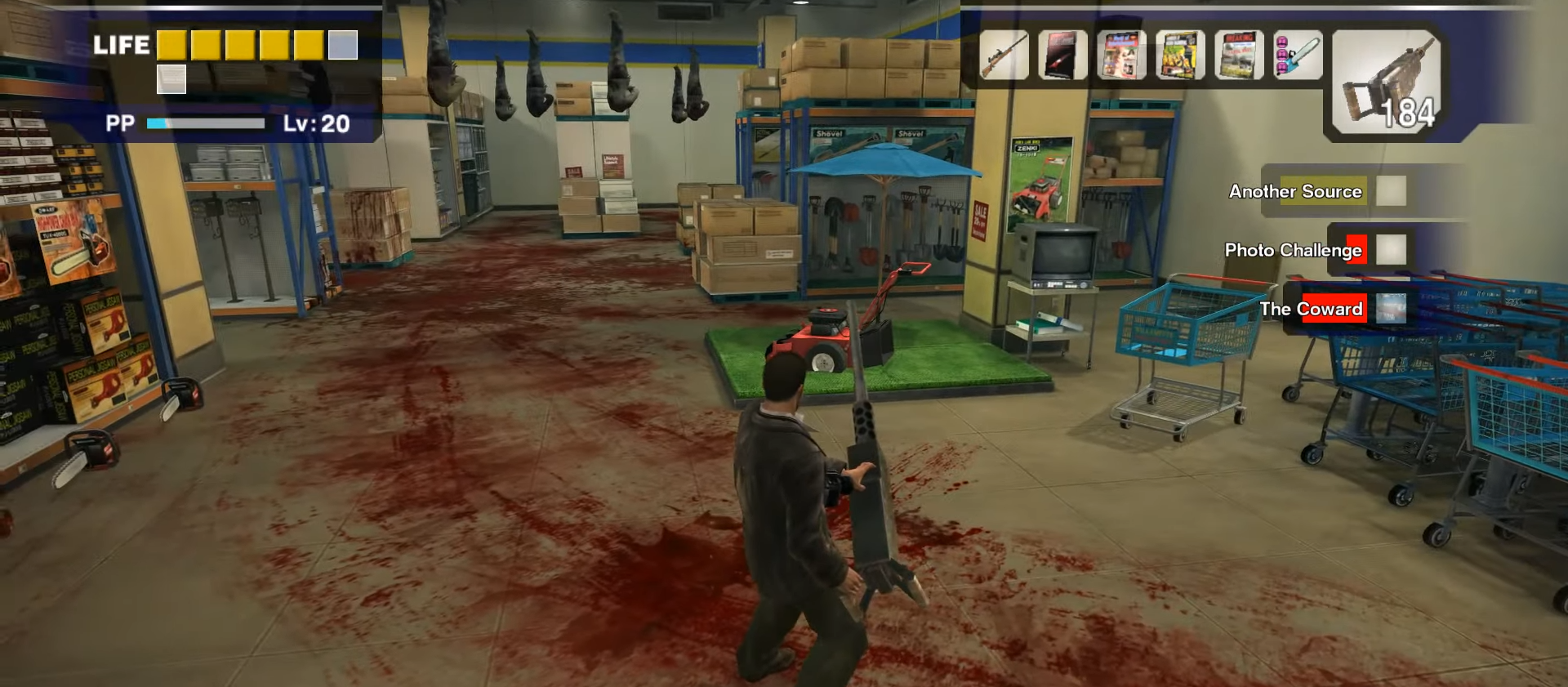
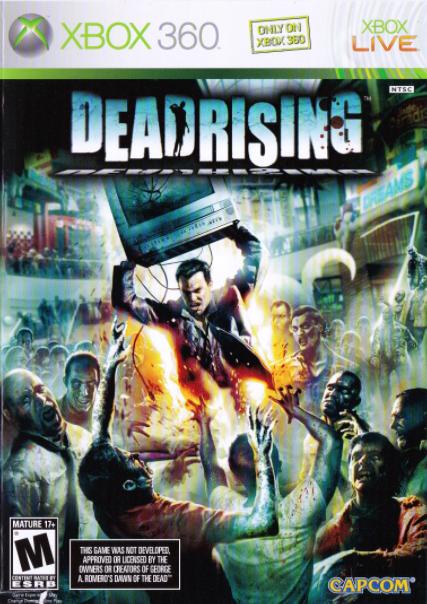
“It doesn’t sound like civil disobedience. It’s too quiet.”
When I first played Dead Rising in 2012, I was not yet aware of “retro gaming” culture. Playing a six year old game made me feel like some kind of renegade. What was wrong with the current crop of games that I was compelled to plunder the used bins? Why was I spending my time with $5 games from the early years of the current console generation instead of the shiny new $60 ones? I realize now that I was after something unique (okay, not too unique—I still wanted to sit on my rump and play video games), something that felt old but played fresh. I didn’t want marginal graphics improvements and tv ads to be the reason I picked up the newest AAA title. I’ve played through plenty of lackluster games in my search, but Dead Rising delivered the singular experience I was craving and so much more.
Released in 2006 (fifteen years ago!), it remains, to this day, a refreshing gaming experience. You play as Frank West, a photojournalist who willingly enters a quarantined mall in search of a scoop only to find the place filled with zombies. Notwithstanding George Romero’s Dawn of the Dead, a shopping mall is an unusual setting for a zombie apocalypse, but it perfectly suits the horror-comedy tone that the game revels in. It’s only the backdrop for the game, of course, but it captures the genre-shrugging nature of Dead Rising very well. Horror games, like Capcom’s exquisite Resident Evil 4 from the prior year, typically feature a gritty aesthetic and rely on jump scares, intense gameplay and psychological terror. But this game is not a horror game, really. It uses the flavor of the genre but isn’t very interested in achieving the ends that those games are. The mall setting allows for a few eerie elements, such as the lights that turn off and on automatically, but for the most part it is the contrast that makes the mall so creepy. It seems improper to wander around the pristine facility—movie posters, decorated window displays, fully stocked cafes, gumball machines—with zombies instead of people milling about. I don’t think it was trying to make the same social critique that Romero was, but I don’t think it matters, either.
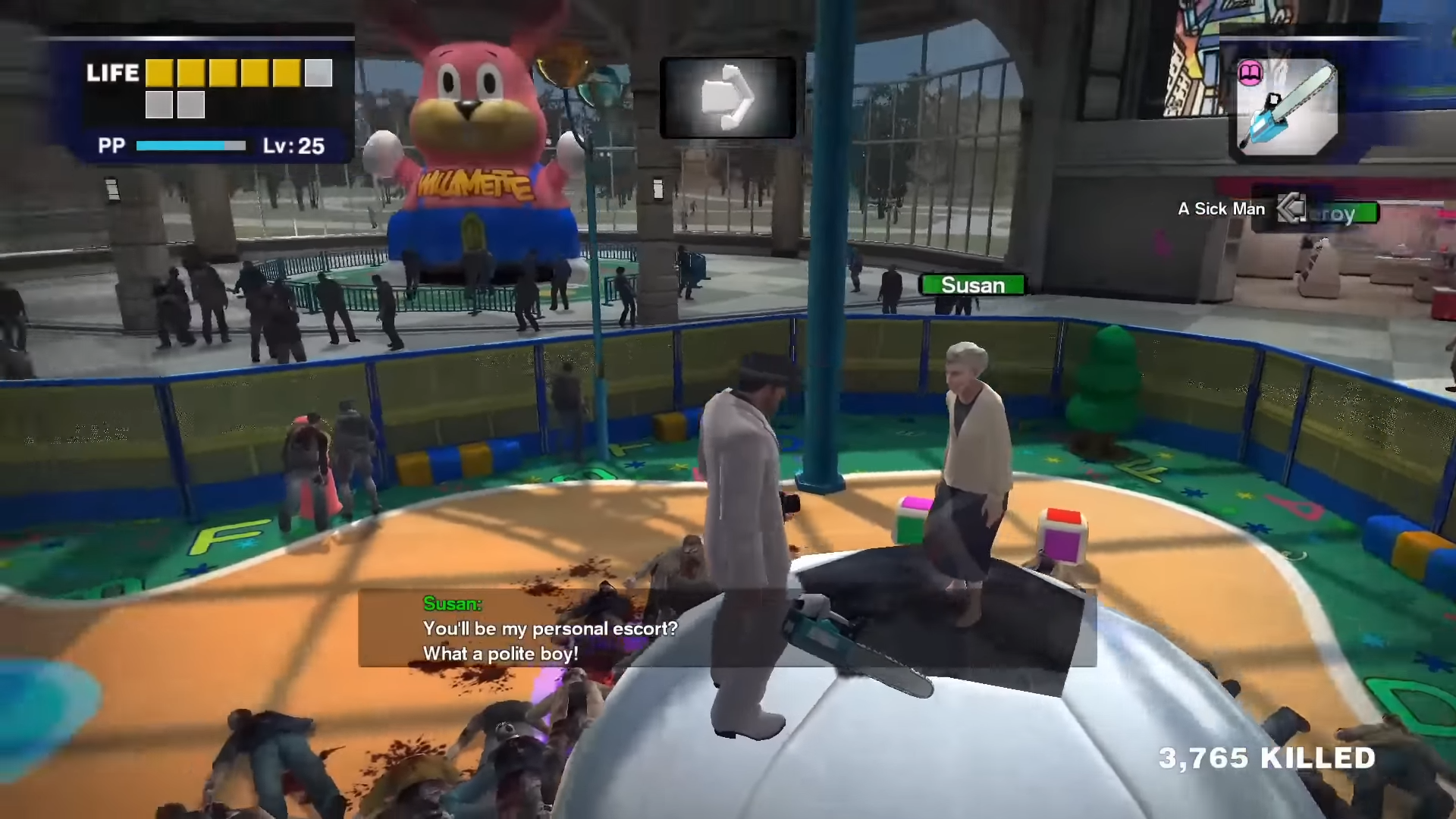
You drop onto the roof of the Willamette Mall after making a deal with the helicopter pilot to return in 72 hours (6 hours of playtime—5 minutes of playtime = 1 in-game hour). You had to come in via copter because the military has barricaded off all of the roads in order to quarantine the Willamette residents who have taken to eating each other. It’s really simple to jump right into the action, but you’ll soon realize there is a huge drawback to doing so—the game only gives you a single save slot, allowing you to paint yourself into a corner pretty easily and miss out on various side missions. You might even miss the main storyline. But this is part of the appeal of the game, to me. The single save slot was a fairly controversial decision, but I actually think it has aged well (even though they added extra save slots to the remastered edition). It’s virtually impossible to do everything in a single playthrough anyway, so it’s best to set aside any notion that you’ll “get” the game after one playthrough and use the first six hours to get your bearings. There is so much to do that even if you just flounder around, fail to complete the case files, and miss the helicopter, you’ll still have a lot of fun and formulate a more focused plan for your next playthrough.
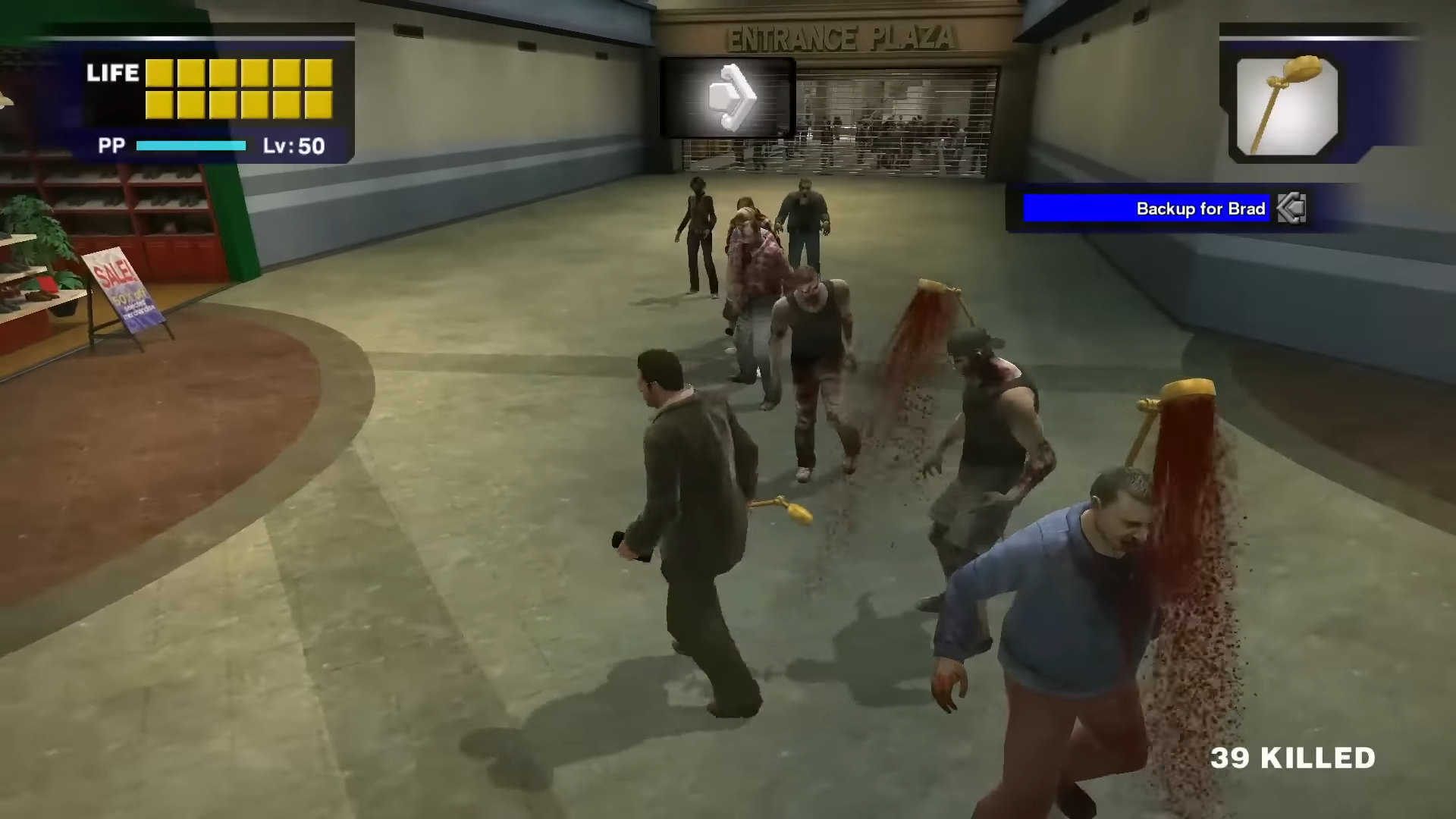
At the very beginning of the game you’ll meet the custodian, Otis, who gives you a walkie-talkie and routinely notifies you of survivors he sees on the security cameras. You can rescue them, or leave them to die, or kill them yourself. Some can handle weapons if you choose to give them one, others need to be pulled along by the hand, and still others have to be carried on Frank’s back. If you ignore their cries for help, you’ll be notified when they inevitably die; you’ll be notified again when they become undead as well. There are various Achievements tied to rescuing and photographing survivors but the best is Frank the Pimp, which requires you to simultaneously escort eight female survivors to the security room.
In addition to the growing hordes of zombies that clog up the mall, you’ll also encounter a dozen or so psychopaths—people who have avoided the infection but have gone mad. These characters provide the outrageous shenanigans that move Dead Rising so firmly into horror-comedy territory. There’s a nightmarish clown who juggles chainsaws, an alcoholic gun store owner, an obese cop who sexually tortures female survivors, and a burgeoning cult of weirdos in raincoats and gasmasks.
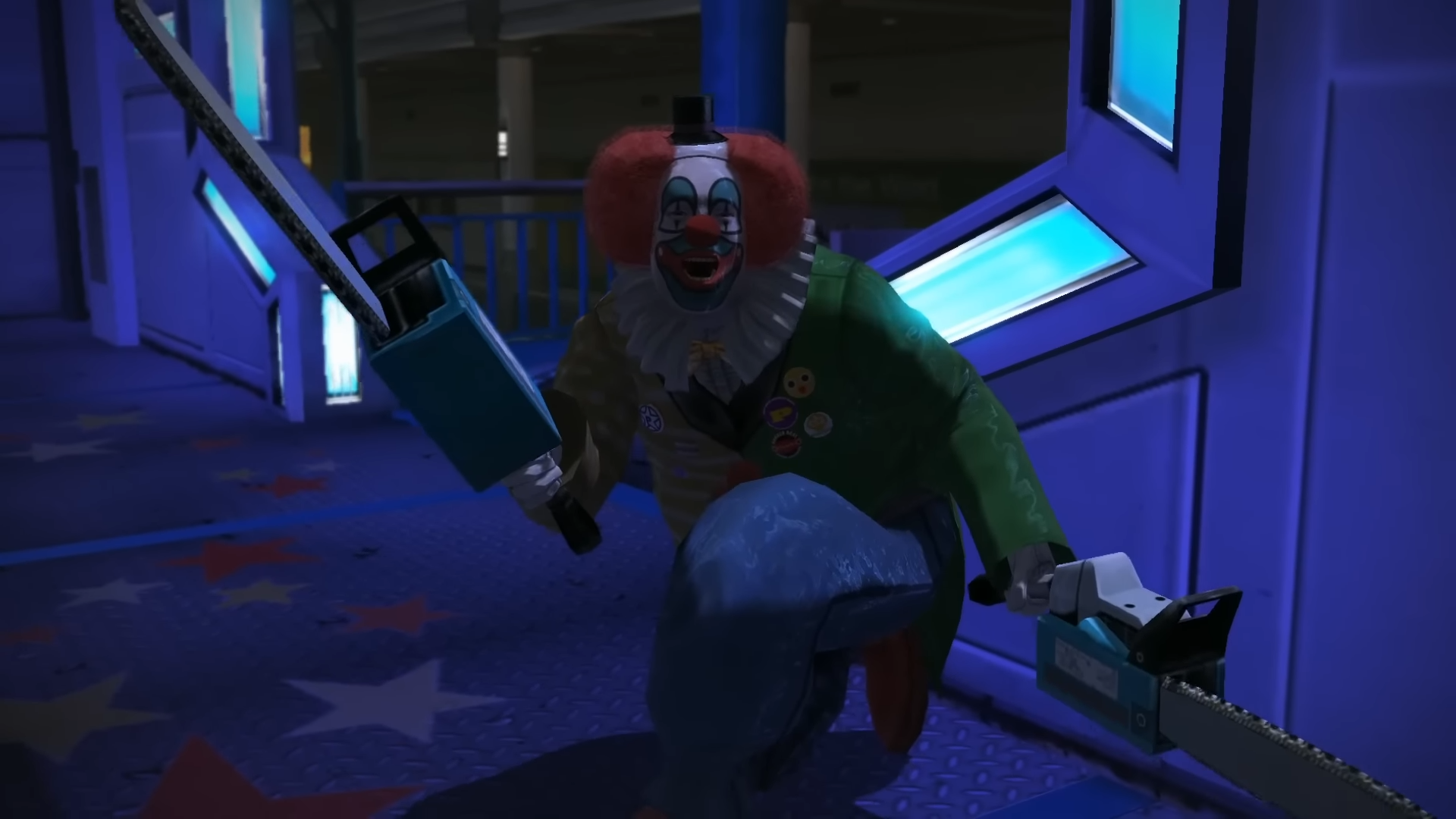
One of the game’s memorable moments is when you first enter Seon’s Food & Stuff, a grocery store in the northwestern most portion of the mall. You’re heading there to retrieve a first aid kit from the pharmacy to treat Brad’s gunshot wound. (Brad, along with his partner Jessie, have been sent in by the Department of Homeland Security to investigate the situation.) After wading through a sea of zombies to get there, you find the floor completely devoid of the flesh-eaters. That’s because the store’s owner is still alive and hellbent on keeping his store neat and tidy. He comes at you with a pump-action shotgun and a shopping cart retrofitted with knives and spears. He also has an unconscious hostage in the cart who holds key knowledge to help Frank unravel the mystery. Encounters like these really ratchet up the tension. Since there are simply so many zombies—which is a good thing and pretty impressive, technically—they can’t pose too much of a threat, individually, or the game would be too hard. The psychopaths are the perfect, deadly complement to the less lethal zombies.
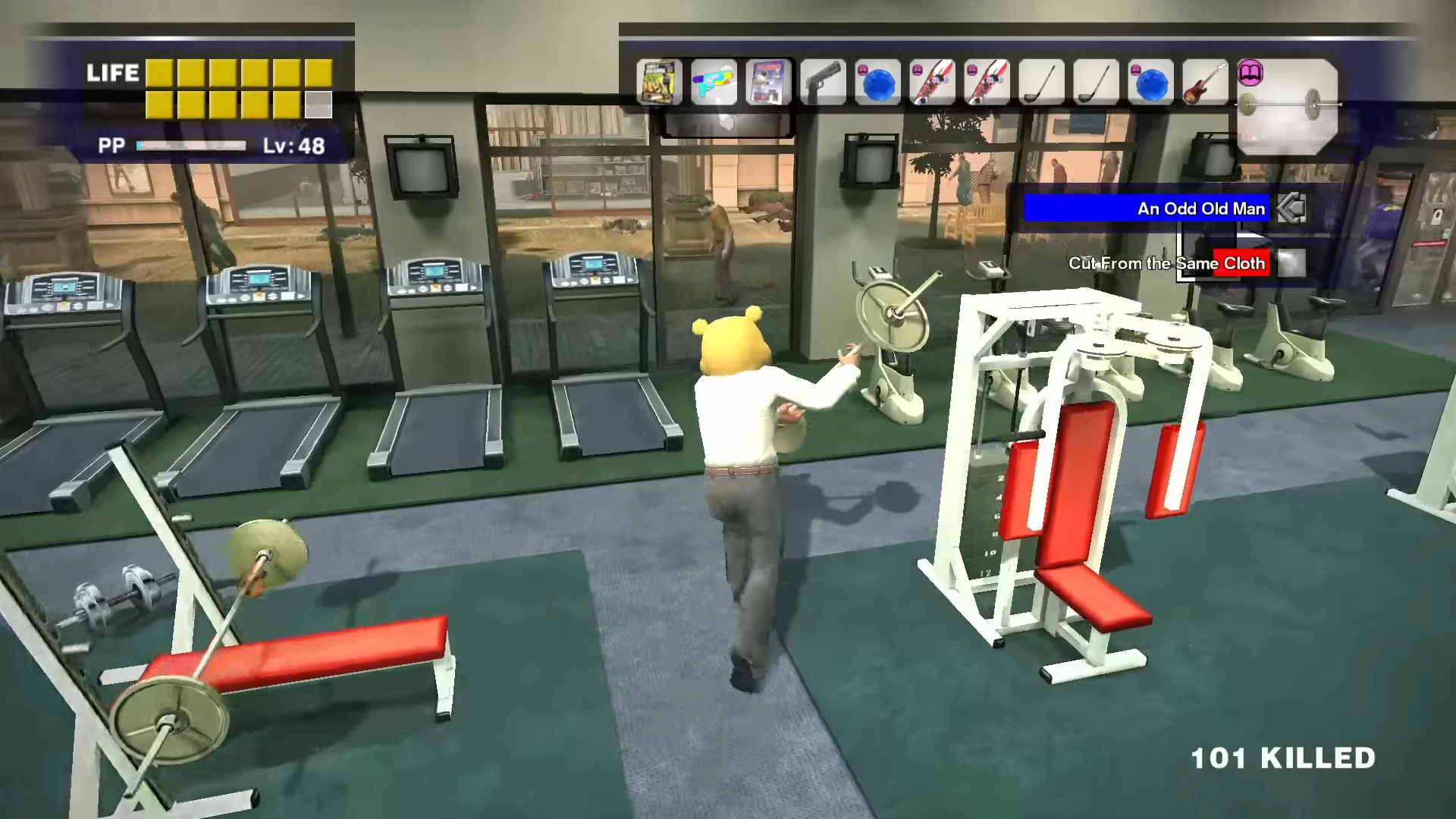
The cool thing about the six hour clock and the single save slot is that you can’t do it all, by design. You’re forced to neglect some things in favor of others as each of the scoops only last for a certain amount of time. You can play the entire game and fail to encounter many of the survivors and psychopaths. For instance, there are thousands of zombies in the underground maintenance tunnels, where you’ll find Larry Chiang, a butcher who refers to zombies as “spoiled meat” and humans as “fresh meat.” But you don’t have to confront Chiang at all, and might not even find him until your second or third playthrough. If you’d prefer to focus on saving every survivor instead of completing the story, or if you want to attempt to kill 53,594 zombies (the population of Willamette) in a single playthrough and unlock Mega Man’s Mega Buster, you can do those things instead. To get the ‘A’ ending there are obviously tasks to complete, but if that’s all you’re here for then you’re missing the point of the game.
As you play, Frank will level up in his abilities. At first he can only do the basics—jump, punch, kick, etc. But as you improve, you’ll be roundhousing, zombie surfing, and doing the double lariat (colloquially known as the “spinning clothesline”). The number of inventory slots available to the player also increases. These slots can be filled with all manner of things, but will mostly be used to carry food and weapons. In virtually every store in the mall, there is something available for Frank to use to defend himself. You’ll naturally gravitate toward a few items—namely firearms and blades—but there are some fun alternatives as well. Guitars, nail guns, barbells, lawn mowers, boomerangs, chain saws, bowling balls, golf clubs, hedge trimmers. There are plenty of things to help you fight through the endless ranks of the walking dead. Who ever said a shopping mall was a bland setting for a zombie game?
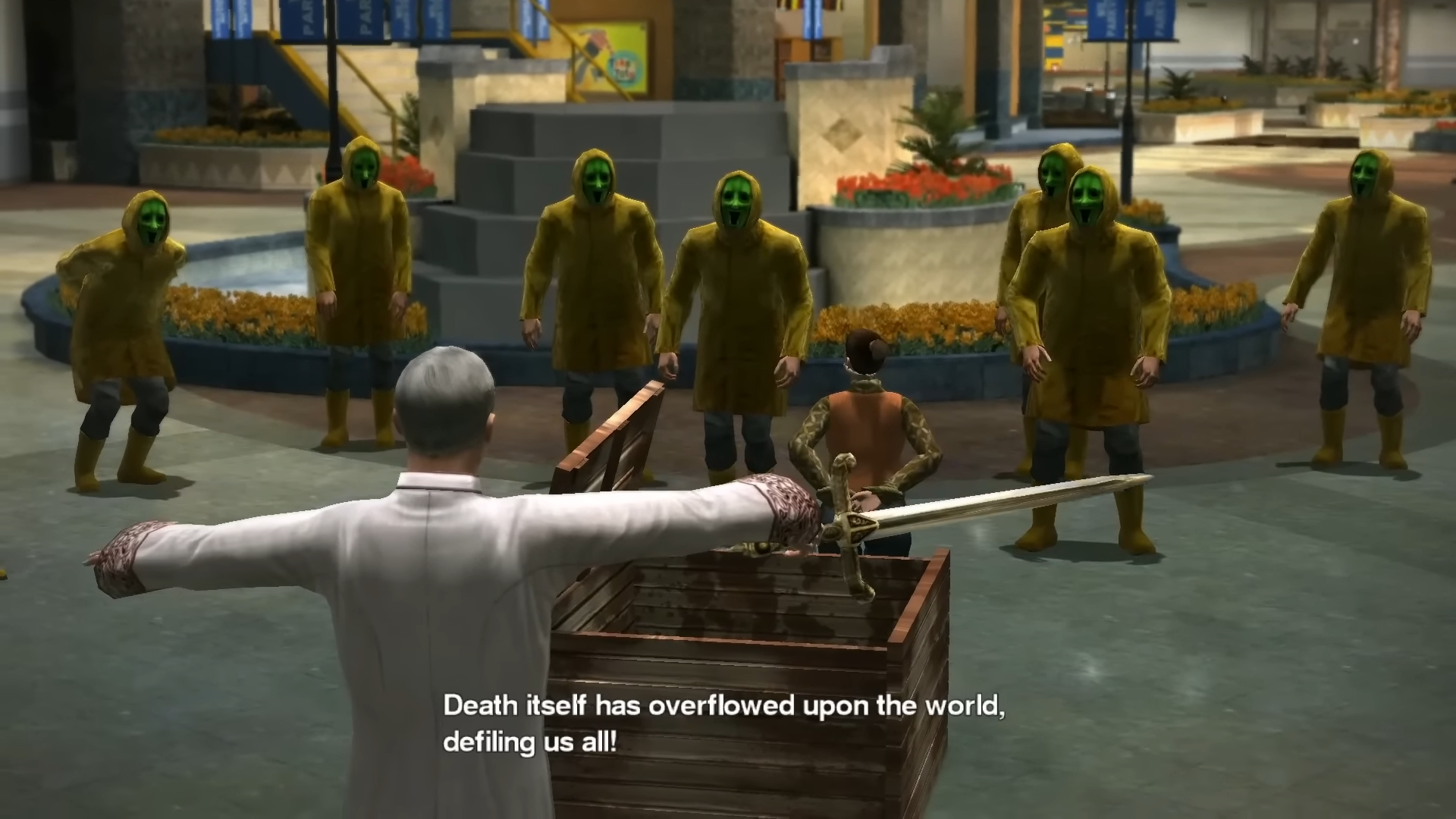
While I usually attempt to attain all of the Achievements I can when I play Xbox games, I oftentimes find the pursuit to be only partially fulfilling. By the time I get to the end of the list I’m typically tired of the game, but crossing them off the list helps me to put the game down for good. This is not the case with Dead Rising. Somehow, in the early days of Achievements, when many games were inappropriately attaching them to obscure multiplayer game types and absurd amounts of collectibles, Capcom totally nailed the spirit of the new gameplay element. While there are a few collectible Achievements, the rest are largely gameplay-focused (e.g. you get one for photographing ten psychopaths in a single playthrough). While some games drew ire from Achievement hunters because they forced you to play through the game on four or five different difficulties, the repeat playthroughs of Dead Rising avoid the repetitive nature of those games and so it does not feel like such a chore. I think what I appreciate most about the Achievements in the game is that they encourage the player to explore everything the game has to offer. Getting through the Achievements means you’ve finally exhausted pretty much every aspect of the game; whereas in other games you’re often asked to do many things over and over while leaving some aspects of the game virtually untouched. The lone exception to my delight with the Achievement list is 7-Day Survivor. This Achievement (and its little brother, 5-Day Survivor) requires you to survive for 7 days straight without saving, which means you have to have your Xbox on for at least 14 hours; likely longer than that to account for breaks to eat and sleep and whatnot. Yikes. Haven’t even attempted it; not sure if I ever will. Seems hard to justify the time.
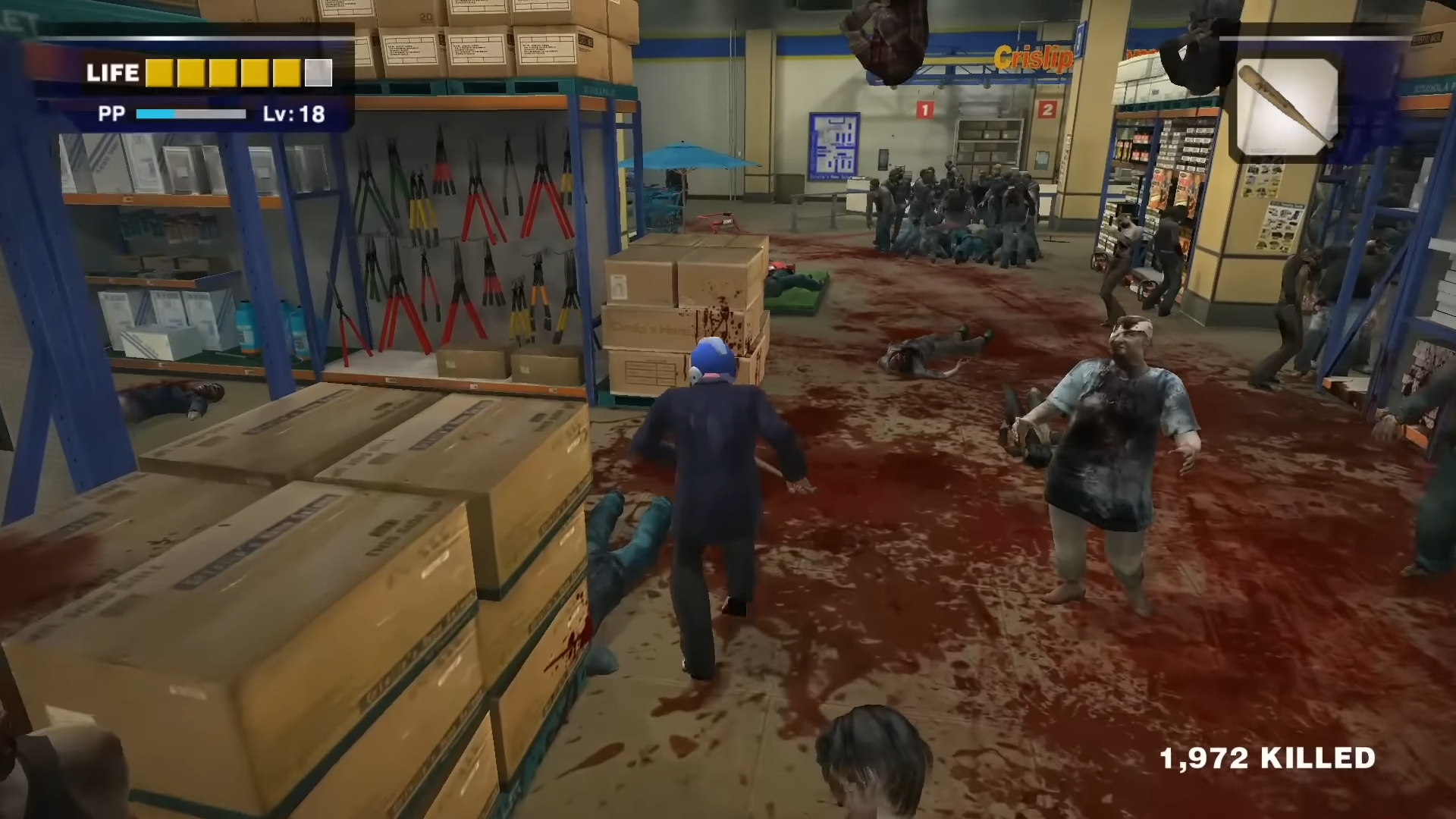
When you do get around to aiming to complete the story properly, you’ll be richly rewarded if you’re into kitschy horror. There’s always a risk in zombie stories for a bland scientific explanation to suck you right out of the enjoyment of the thing. But Dead Rising does a good job of leaving the details fuzzy enough, and glossing them over with political intrigue, personal drama, and plot twists that it all works (within the confines of horror-comedy, of course). Once again, the clock aids in this regard. Consider the standard open world game where you can spend ten hours exploring before returning to a storyline that’s waiting on you and won’t happen until you’re ready. In such a game you inevitably lose much of the story momentum by allowing the player to wander for so long without ramification. In Dead Rising, you may wander, but the story will continue on without you. Indeed, if you fail a case, the game will inform you that the story has essentially ended, even though it will allow you to continue playing. This gives the game a very good pace when following the story.
The only point where the game truly falters is in its drawn out “true” ending that has you escaping the premises. It strays too far from the elements that built up tension in the game’s preceding hours of play, and there’s simply not enough steam for it to be compelling, storywise. But overall the game is a real treat. It’s survival horror without the truly terrifying elements of games like Resident Evil 4 or Dead Space; instead, these are replaced with a scrumptious gloss of B movie charm. It’s probably too much of a niche product to top any sort of “best” list, but it’s one of my favorite games of all time and the one I’ve played through the most times from start to finish.